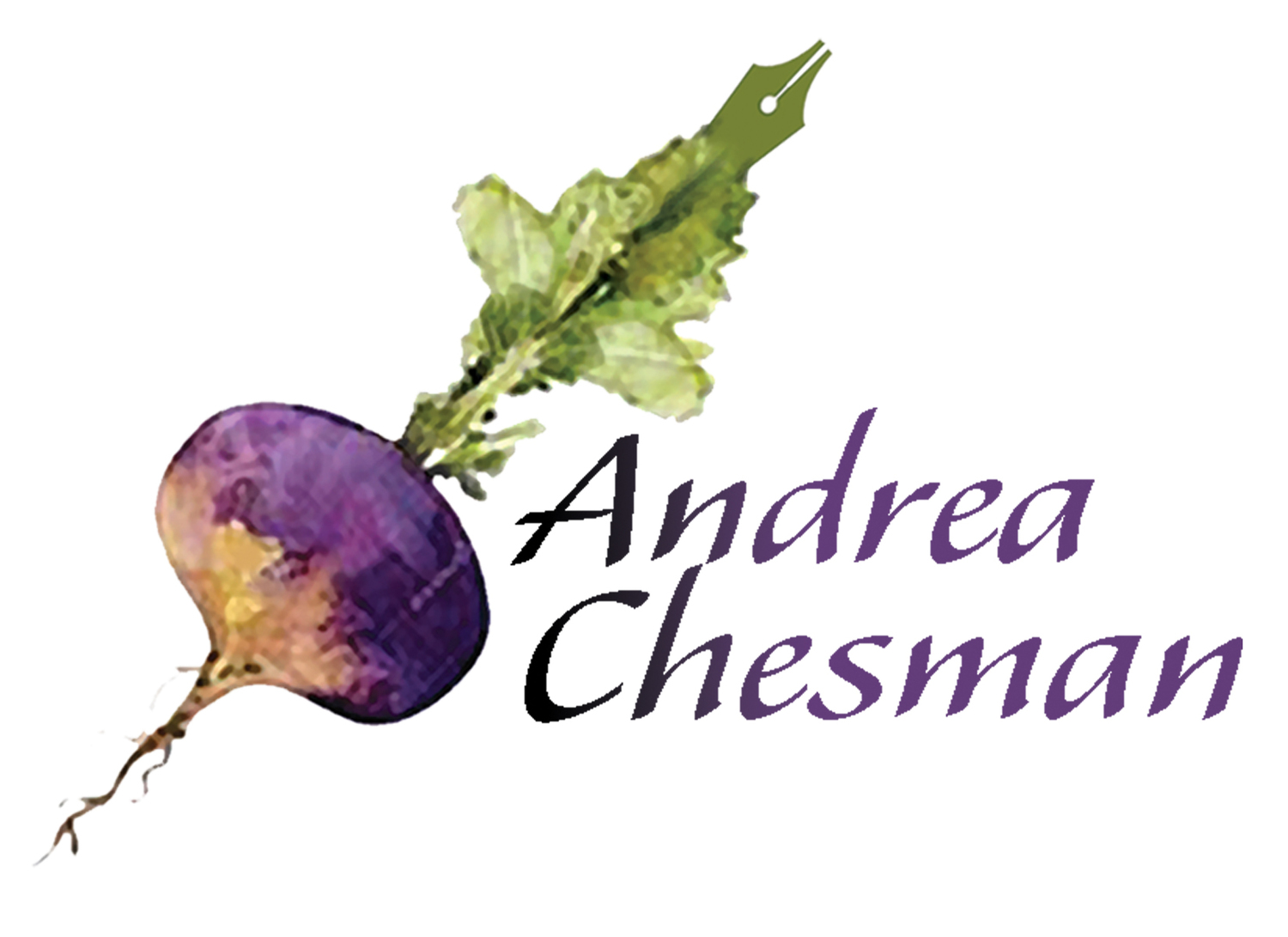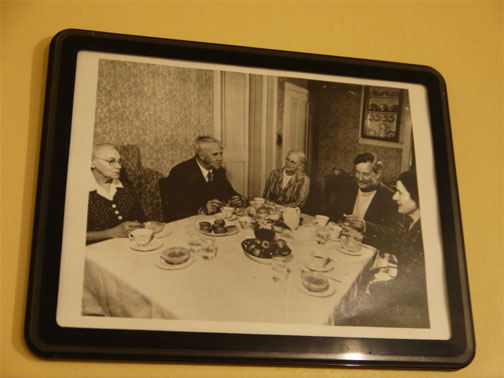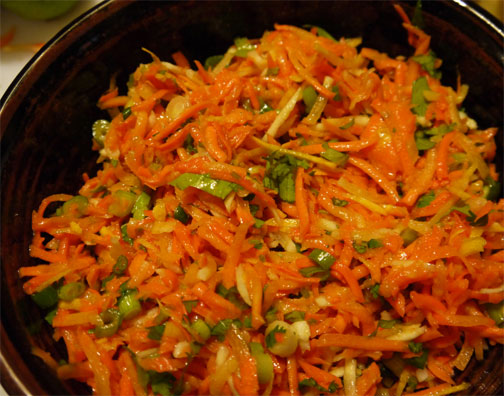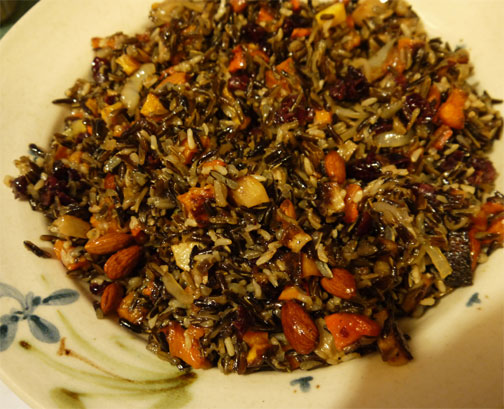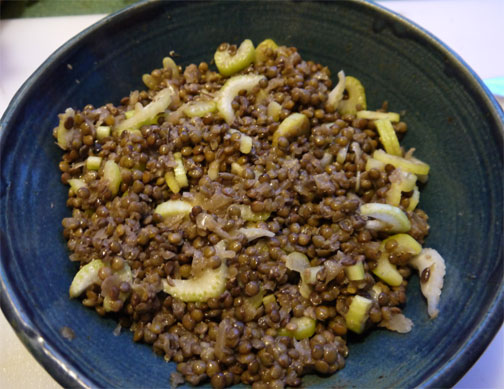Spring is coming
 I know spring is coming because we have tapped the maple trees.
I know spring is coming because we have tapped the maple trees.
and like most gardeners, I am dreaming of the garden season to come. But in the harsh light of day, or rather the lengthening hours of soft afternoon light, I am contemplating what preserved foods need to be used up. Not much as it turns out.
The last of the vegetables in the root cellar and what’s this? Another bag of frozen green beans? And frozen peas?
My heart doesn’t soar looking at the last of the vegetables in cold storage, but I do crave green food – be it fresh or frozen. Turning not-fresh vegetables into salads will be the challenge of the day.
 Roasted Vegetable Salad with Maple-Soy Vinaigrette
Roasted Vegetable Salad with Maple-Soy Vinaigrette
When I was working my way through college, I briefly held a job in the kitchen of an assisted living residence. My boss—the meal planner—was old enough to be a resident herself, and salads tended to be easy on dentures – a scoop of cottage cheese garnished with canned peach slices or a square of lime jello in which shredded carrots were suspended, topped with a dollop of mayo. All served on a limp leaf of iceberg lettuce. Yum.
But there was one salad I liked (minus the iceberg): frozen peas, sour cream, and dried dill or dill seed. I like it still, and it makes a fine salad for this time of year.
 A simple salad of just three ingredients: frozen peas, sour cream, and dill seeds. And, of course, salt and pepper.
A simple salad of just three ingredients: frozen peas, sour cream, and dill seeds. And, of course, salt and pepper.
What else? Frozen green beans will make a fine salad with canned white beans and the last of the pickled roasted peppers. Sure, it is close to the original three-bean salad made with canned green beans, canned wax beans, and canned kidney beans in an overly sweet dressing. But this iteration makes really fine use of frozen green beans (or wax beans, if you have them). I am sure it will add to everyone’s enjoyment to know that this salad, which dates back to the 1800s, was J. Edgar Hoover’s favorite salad and believed to be one of the final dishes he ate before his death.
 Two bean salad. Choose any vinaigrette to dress this.
Two bean salad. Choose any vinaigrette to dress this.
The last few turnips, carrots, and beets in the root cellar are a little soft, and here and there are browned, decay spots. Not a problem—I’ll just cut them away. The vegetables will be fine roasted. They will be even tastier tossed with a maple-soy vinaigrette and bedded on some winter greens. That maple-soy vinaigrette makes every vegetable delicious. The combination of the umami characteristics of soy sauce matched with the sweetness of maple syrup and rounded out with balsamic vinegar—I don’t think I have a finer salad dressing in my repertoire…
Roasted Vegetable Salad
Serves 4
1 large beet, peeled and diced
2 carrots, peeled and diced
1 parsnip, peeled and diced
1 rutabaga, peeled and diced
1 whole garlic head, cloves separated and peeled
2 tablespoons extra virgin olive oil
4 to 6 cups mixed tender winter greens (Belgian endive, escarole, frisée, napa cabbage, or Savoy cabbage), thinly sliced
Maple-Soy Vinaigrette (recipe follows)
Salt and freshly ground black pepper
1. Preheat the oven to 450° F. Lightly oil a large shallow roasting pan or half sheet pan.
2. In a large bowl, combine the beet, carrots, parsnip, rutabaga, and garlic. Add the oil and toss well. Transfer to the pan and arrange in a shallow (preferably single) layer.
3. Roast the vegetables for 35 to 40 minutes, until the vegetables are tender and lightly browned, stirring or shaking the pan occasionally for even cooking.
4. Just before serving, on a large platter, toss the greens with about 1/4 cup of the vinaigrette. Arrange the vegetables on top and drizzle with another 1/4 cup of the remaining dressing and toss again. Season to taste with salt and pepper. Serve at once, passing the remaining vinaigrette at the table.
Recipe adapted from Recipes from the Root Cellar by Andrea Chesman. ©2010 Andrea Chesman. All rights reserved.
Maple-Soy Vinaigrette
About 2/3 cup
2 tablespoons balsamic vinegar
2 tablespoons soy sauce
2 tablespoons pure maple syrup
2 garlic cloves, minced
1/2-inch ginger, peeled and minced
3 tablespoons extra virgin olive oil
Whisk together the vinegar, soy sauce, maple syrup, garlic, and ginger until combined. Whisking constantly, drizzle in the oil until the mixture emulsifies. Serve immediately or store in the refrigerator in an airtight container for up to 1 week.
Recipe from Recipes from the Root Cellar by Andrea Chesman. ©2010 Andrea Chesman. All rights reserved.
